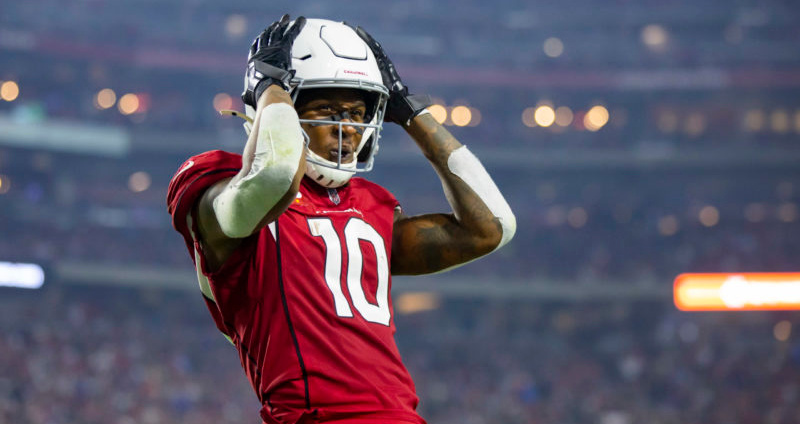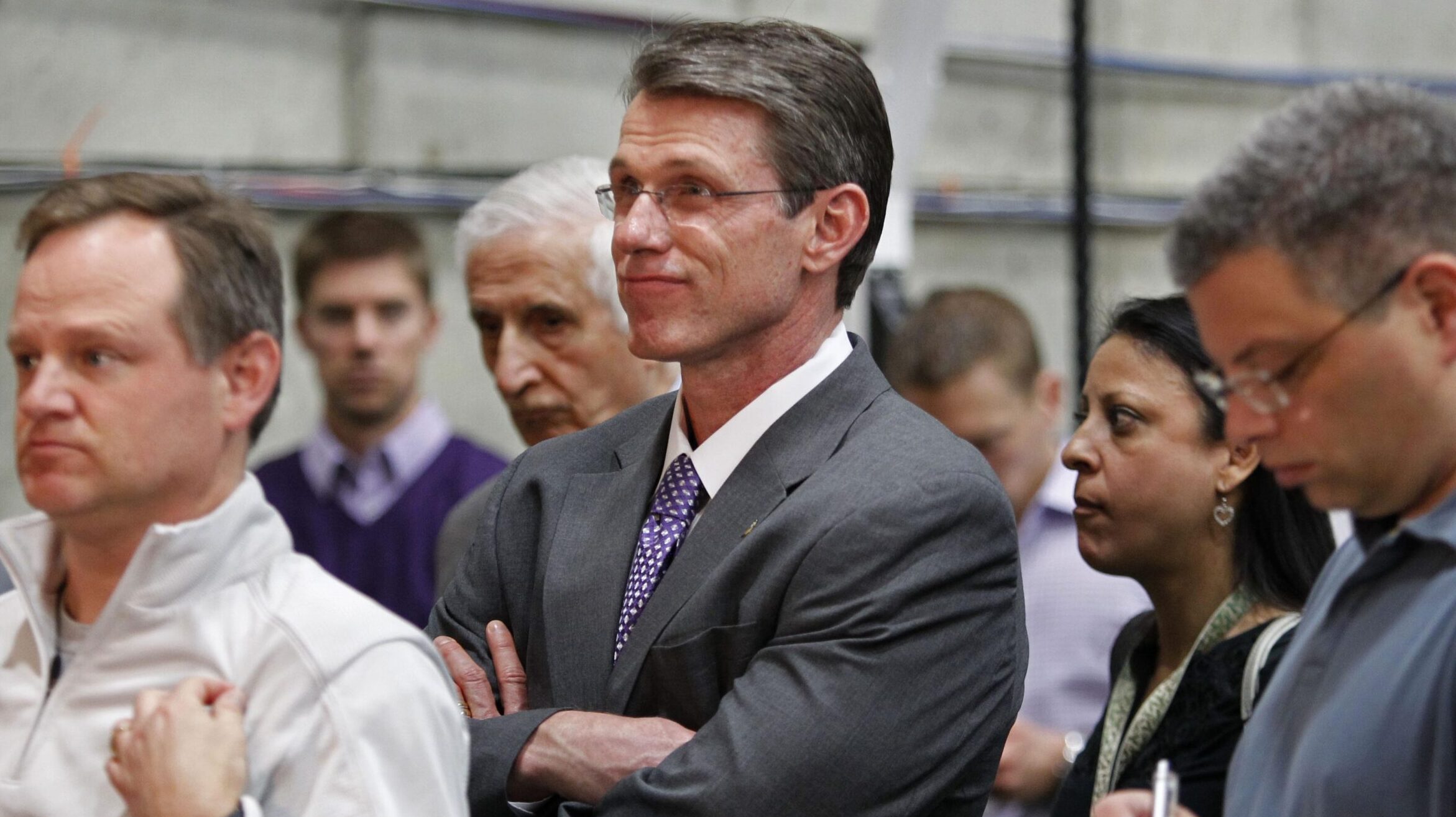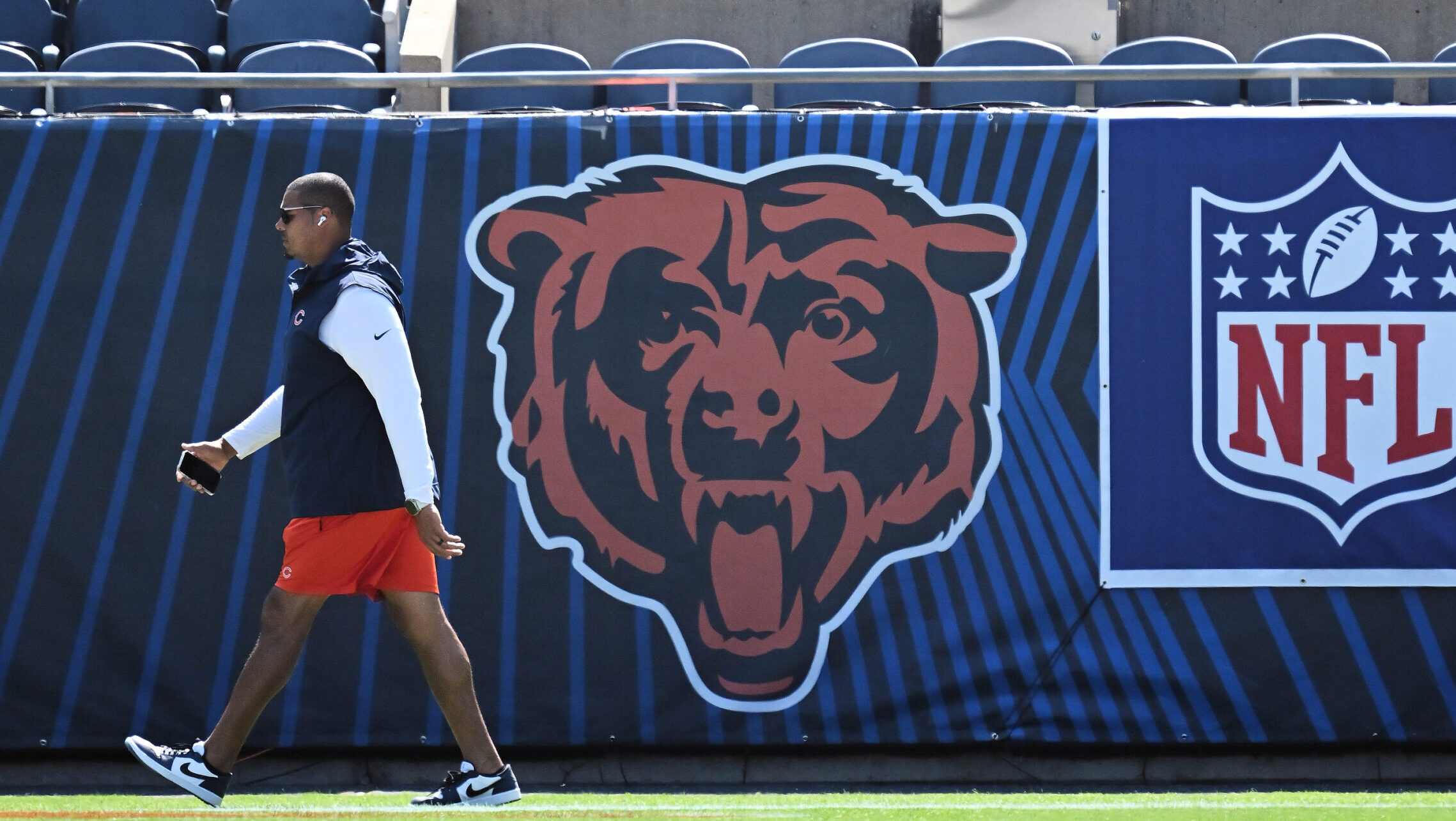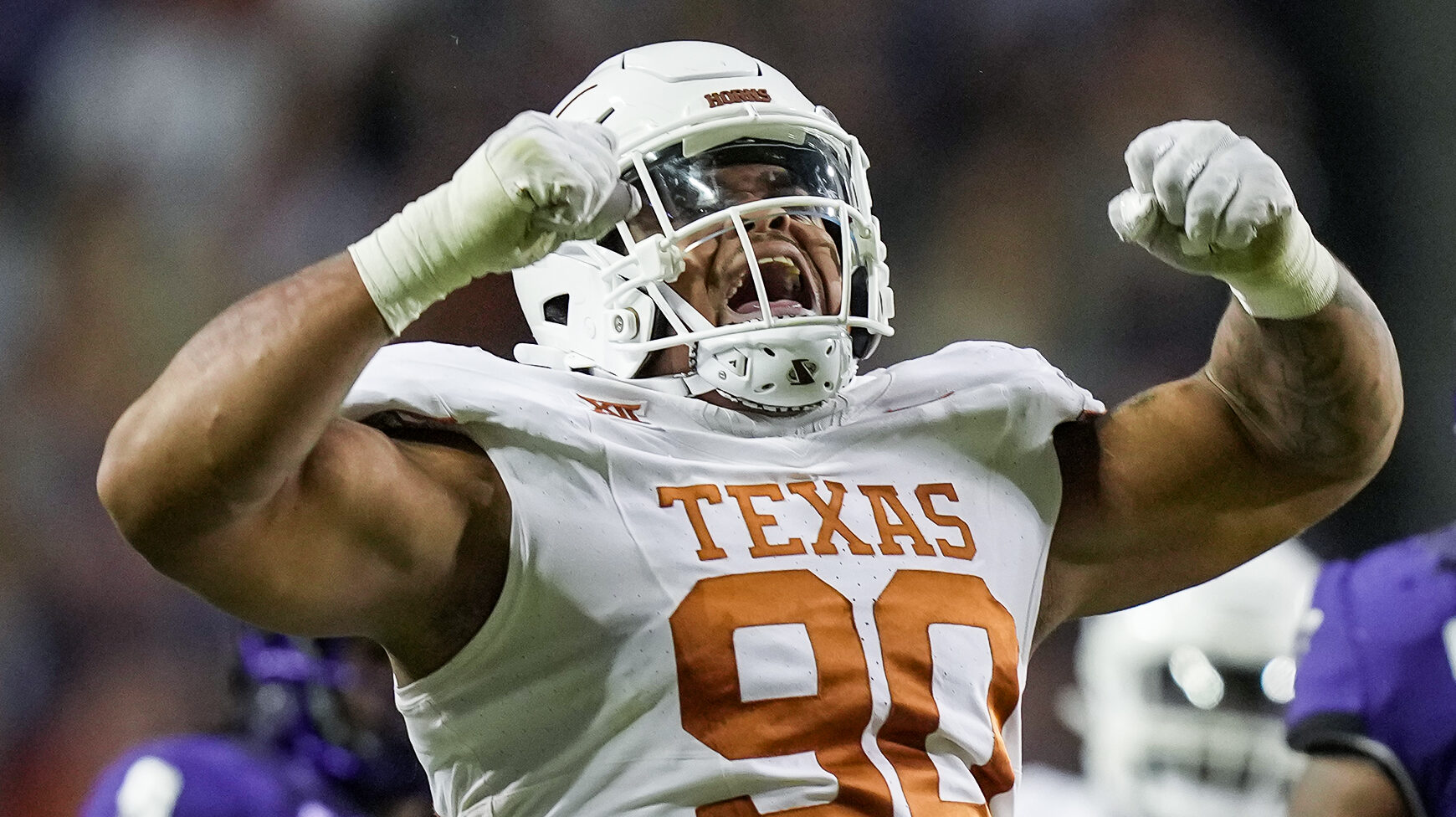Analysis
5/12/22
6 min read
The Trickle Down Effect of the DeAndre Hopkins Suspension

Since entering the league in 2013 as a first-round draft choice of the Houston Texans, DeAndre Hopkins has been one of the most productive receivers in the NFL. The former Clemson Tiger totaled over 800 receiving yards in each of his seven years with the Texans, an impressive feat given the lack of consistency at the quarterback position.
Despite Hopkins’ success, Houston dealt him to Arizona during the 2020 offseason, along with a fourth-round pick, in exchange for David Johnson, a second-round pick, and a fourth-round pick.
This transaction sent the NFL world into shock, seeing a unanimous top-five receiver traded for what many considered to be underwhelming compensation. Just days before playing in his first game as a Cardinal, Hopkins signed a whopping $54.5M contract extension, money that Bill O’Brien was unwilling to put in his former receiver’s pocket.
Hopkins' Rollercoaster Cardinals Career
DeAndre Hopkins had a great start in Arizona, racking up over 1,400 yards in the 2020 season. However, his 2021 campaign was not as bright, posting a career-low 572 receiving yards in just 10 games.
Dealing with two injuries this past season, Hopkins missed more games than the rest of his NFL career combined. Unfortunately for the star receiver, he will miss more games in 2022 due to a looming suspension.
Hopkins was given a recent six-game suspension as a repercussion for disobeying the NFL’s performance-enhancing drugs policy. The standout receiver took to Twitter to voice his frustration, stating, “In my 10-year NFL career, I have never tested positive for using performance enhancing drugs.”
The suspension seemed to have caught Hopkins off-guard, adding, “I am very mindful of what I put in my body and have always taken a holistic approach, so I am working with my team to investigate how this could’ve happened.”
With DeAndre Hopkins out until Week 7, or Week 8 if the Cardinals have their bye week during one of the first six weeks of the season, Arizona will have a sizable hole to fill on offense. Since Kliff Kingsbury and Kyler Murray took the reins in Glendale, the Cardinals have increased their passing yards per game in each consecutive season. However, the offensive personnel groups have shifted in the past few seasons.
In Hopkins’ first year with the team, Arizona ran 67% of their plays with at least three wide receivers, helping him play in 92% of the team’s offensive snaps. In 2021, the Cardinals had an increase of plays with three or more wide receiver formations, up to over 71% of plays. This includes the time Hopkins missed, so Kingsbury was forced to change his approach on the fly last season.
During his time in Arizona, Hopkins has played the vast majority of his snaps as the left wide receiver, and he occasionally flipped to the right side, as well as in the slot.
In the few snaps that Hopkins wasn’t lined up as the left wide receiver in 2020, other players who filled this role included Larry Fitzgerald, Christian Kirk, and Andy Isabella. However, Fitzgerald is retired, Kirk is no longer on the Cardinals, and Isabella has hit the trade market.
Last season, more snaps were available at Hopkins’ typical left wide receiver position because he missed nearly half of the year. Antoine Wesley was the main beneficiary of these snaps, meanwhile Christian Kirk, Rondale Moore, and A.J. Green filled in too.
However, Wesley wasn’t very consistent last season, posting just 208 receiving yards and failing to register five receptions in a single game. This leaves the burning question: what will the Arizona Cardinals do in games without DeAndre Hopkins?
How the Suspension Impacts the Cardinals
On the night of the first round of the NFL Draft, the Baltimore Ravens surprised many around the league by trading Marquise “Hollywood” Brown to the Cardinals.
Having Hopkins on the roster, re-signing A.J. Green, and drafting Rondale Moore in the second round in 2021 made it somewhat unclear why Arizona wanted an additional receiver. After seeing the Hopkins suspension, it seems more sensical why Steve Keim reunited the former Oklahoma teammates.
Although Brown has played more as the right wide receiver with Baltimore, he has at least 150 snaps on the left side in each of his three NFL seasons. A.J. Green is the other presumed starter on the outside, primarily playing on the right in his 2021 campaign with the Cardinals.
Third in succession is Rondale Moore, who played the majority of his receiver snaps in the slot. With this information, it would make sense for Arizona to play Brown on the left, Green on the right, and Moore in the slot during three-receiver sets.
However, given their offseason moves, the Cardinals might be planning to shift to a more 12 personnel-heavy offense. Arizona only played 12 personnel in 22.5% of snaps last season, but this is because starter Maxx Williams had an early-season injury.
After trading for Zach Ertz in October, he was their only other tight end to register more than 10 receiving yards. Throughout last season, running 12 personnel wasn’t nearly as effective as it could be.
With Maxx Williams hoping to be fully healthy and a Zach Ertz return, the Cardinals have a strong tight end duo. But, Arizona drafted Trey McBride, a top tight end prospect in this year’s draft. Not only did the Cardinals make him the third starting-caliber tight end on their roster, but they used a second-round pick to select him. The aggressiveness to shore up the tight end room indicates a clear desire to utilize the position more often, likely resulting in more sets with multiple tight ends.
Another note about the roster of the Cardinals is that James Connor is the only running back on the team who had over 40 NFL touches last season. Given their thinness at this position, Kliff Kingsbury may elect to increase receiver Rondale Moore’s role in the run game.
Last season, Moore carried the ball 18 times and lined up in the backfield for 37 snaps. An additional ripple to consider is that Zach Ertz lined up in the slot more than he did inline last season. With the versatility that Moore and Ertz offer, the Cardinals could run a plethora of formations with three wide receivers and/or multiple tight ends, an impressive thought while missing DeAndre Hopkins.
Few teams may be anticipating the schedule release more than the Cardinals with Hopkins’ suspension, but it seems Kliff Kingsbury has options as to how to proceed without the elite receiver.
With Kyler Murray also reportedly seeking a contract extension, the 2022 season is a pivotal one for many in Glendale. The Cardinals began last season strongly at 10-2 before dropping five of their last six games, and they must perform better in December and January with their talented nucleus. If not, Kingsbury and others could find themselves on the hot seat.
All information provided by TruMedia and PFF, unless otherwise noted





